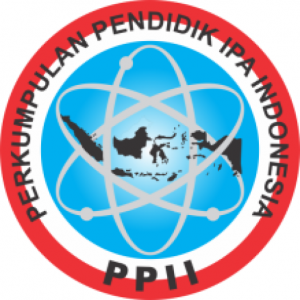Diversity of Bryophytes Based on Substrate Types in the Karangkamulyan Tourist Area, Ciamis Regency
Authors
Endang Prayudaty Wahyuningsih , Ika Nugraheni Ari MartiwiDOI:
10.29303/jbt.v25i1.8495Published:
2025-02-04Issue:
Vol. 25 No. 1 (2025): Januari - MaretKeywords:
Bryophytes, diversity, ecosystem, Karangkamulyan.Articles
Downloads
How to Cite
Downloads
Metrics
Abstract
Indonesia is renowned as a megabiodiversity country with a wealth of flora, including the diversity of bryophytes. These plants play a crucial role in ecosystems, such as oxygen production, erosion control, and water absorption. This study aims to analyze the diversity of bryophytes in the Karangkamulyan Tourism Area, Ciamis Regency, and to examine their diversity based on substrate types. Karangkamulyan is a cultural and natural conservation area covering 25.5 hectares with a climate and conditions that support bryophyte growth. The research utilized an exploratory method with random sampling at three selected points within the area. Morphological and anatomical analyses were conducted to identify species, and the percentage of occurrence was analyzed based on substrate types. The results revealed the presence of 15 species belonging to 12 families of bryophytes inhabiting various substrates such as soil, rocks, and tree trunks. The identified bryophytes included 6 liverworts (Marchantiophyta): Dumortiera hirsuta, Marchantia emarginata, Riccia gangetica, Heteroscyphus argutus, Heteroscyphus coalitus, and Schiffneriolejeunea sp.; and 9 mosses (Bryophyta): Neckeropsis undulata, Thuidium plumulosum, Ectropothecium falciforme, Fissidens sp., Fissidens flaccidus, Calymperes sp., Hyophila sp., Barbula sp., and Bryum sp. Based on substrate types, 91 occurrences were recorded, consisting of 25% terrestrial bryophytes (23 occurrences), 55% epiphytic bryophytes (50 occurrences), and 20% epilithic bryophytes (18 occurrences).
References
Bakalin, V., Choi, S. S., & Park, S. J. (2021). Review of Heteroscyphus Schiffn. (Lophocoleaceae, Marchantiophyta) in Cambodia. Journal of Bryology, 43(1), 52–61. https://doi.org/10.1080/03736687.2020.1815383
Bawaihaty, N., Istomo, & Hilwan, I. (2014). Keanekaragaman dan Peran Ekologi Bryophyta di Hutan Sesaot Lombok, Nusa Tenggara Barat. Jurnal Silvikultur Tropika, 05(1), 13–17. https://doi.org/10.29244/j-siltrop.5.1
Casas, C., Brugués, M., Cros, R. M., & Sérgio, C. (2006). Handbook of Mosses of the Iberian Peninsula and The Balearic Island. Institut d’Estudis Catalans. https://www.researchgate.net/publication/289107962
Ergiana, H., Wiryani, E., & Jumari. (2013). Bryoflora Terestrial Di Zona Tropik Gunung Ungaran, Jawa Tengah. Jurnal Biologi, 2(1), 65–71. https://ejournal3.undip.ac.id/index.php/biologi/article/view/18974
Fajriah, R., Kamal, S., & Eriawati. (2018). Keanekaragaman Lumut (Bryophytes) pada Berbagai Substrat di Kawasan Sungai Pucok Krueng Raba Kecamatan Lhoknga Kabupaten Aceh Besar. Prosiding Seminar Nasional Biotik, 460–466. https://doi.org/http://dx.doi.org/10.22373/pbio.v6i1.4289.g8680
Glime, J. M. (2017). Bryophyta – Bryopsida. Chapter 2-7. In Bryophyte Ecology, Volume 1: Physiological Ecology (Vol. 1, Issue March). http://digitalcommons.mtu.edu/bryophyte-ecology/
Gradstein, S. R. (2011). Guide to the Liverworts and Hornworts of Java. SEAMEO-BIOTROP. https://www.researchgate.net/profile/S-Gradstein/publication/266413412
Gradstein, S. R. (2015). An overview of the genus Schiffneriolejeunea (Marchantiophyta: Lejeuneaceae). Nova Hedwigia, 100(3–4), 507–524. https://doi.org/10.1127/nova_hedwigia/2014/0225
Gradstein, S. R., & Culmsee, H. (2010). Bryophyte diversity on tree trunks in montane forests of Central Sulawesi, Indonesia. Bryophyte Diversity and Evolution, 31(1), 95. https://doi.org/10.11646/bde.31.1.16
Gradstein, S. R., Churchill, S. P., & Salazar-Allen, N. (2001). Guide to the Bryophytes of Tropical America. Memoirs of the New Botanical Garden, 86(January), 1–577. https://www.researchgate.net/publication/312371582
Haldoko, L. A., Muhammad, R., & Purwoko, W. A. (2014). Karakteristik Batu Penyusun Candi Borobudur. Jurnal Konservasi Cagar Budaya Borobudur, 8(1), 38–47. https://doi.org/http://dx.doi.org/10.33374/jurnalkonservasicagarbudaya.v8i1.123
Indriani, L., Primandiri, P. R., & Sulistiono. (2014). Inventarisasi Lumut Terestrial di Roro Kuning Nganjuk. Seminar Nasional XI Pendidikan Biologi FKIP UNS, 11(1), 340–343. https://jurnal.uns.ac.id/prosbi/article/view/7748
Irawati, I., Rustam, A., & Nurindah, N. (2023). Identifikasi tumbuhan lumut (Bryophyta) di Kawasan Hutan Topidi Kabupaten Gowa. Filogeni: Jurnal Mahasiswa Biologi, 3(1), 23–26. https://doi.org/10.24252/filogeni.v3i1.29979
Lukitasari, M. (2018). Mengenal Tumbuhan Lumut (Bryophyta): Deskripsi, Klasifikasi, Potensi, dan Cara Mempelajarinya. In CV. AE Media Grafika. CV. Ae Media Grafika. http://pics.unipma.ac.id/ (Accessed on July 10, 2023)
Marhento, G., & Zaenab, C. (2021). Biodiversitas Lumut Epifit Di Gunung Kendeng Dalam Kawasan Taman Nasional Gunung Halimun Salak Jawa Barat. Seminar Nasional Perhimpunan Masyarakat Etnobiologi Indonesia KE V, 78–82. https://jte.pmei.or.id/index.php/jte/article/view/126
Maulana, A. M. I., Dadi, & Sopyan, T. (2016). Keanekaragaman Jenis Serangga Di Kawasan Hutan Lindung Karangkamulyan Kabupaten Ciamis. Jurnal Pendidikan Biologi (Bioed), 4(1), 69–74. https://doi.org/https://doi.org/10.25157/jpb.v4i1.559
Mulyani, E., Perwati, L. K., & Murningsih, M. (2015). Lumut Daun Epifit Di Zona Tropik Kawasan Gunung Ungaran, Jawa Tengah. Bioma : Berkala Ilmiah Biologi, 16(2), 76–82. https://doi.org/10.14710/bioma.16.2.76-82
Pratama, A. A., Kurniasih, S., & Prasaja, D. (2022). Keanekaragaman Bryophyta di Kawasan Pusat Pendidikan Konservasi Alam Bodogol. Jurnal Penelitian Ekosistem Dipterokarpa, 8(2), 131–140. https://doi.org/https://doi.org/10.20886/jped.2022.8.2.131-140
Putra, R. R., Hernawati, D., & Fitriani, R. (2019). Identifikasi Tumbuhan Lumut di Kawasan Wisata Gunung Galunggung Kabupaten Tasikmalaya Jawa Barat. Bioma : Berkala Ilmiah Biologi, 21(2), 114–120. https://doi.org/10.14710/bioma.21.2.114-120
Raihan, C., Nurasiah, & Zahara, N. (2018). Keanekaragaman Tumbuhan Lumut (Bryophyta) di Air Terjun Peucari Jantho Kabupaten Aceh Besar. Prosiding Seminar Nasional Biotik, 6(1), 439–451. https://doi.org/http://dx.doi.org/10.22373/pbio.v6i1.4282.g2820
Singh, S. K. (2014). An Appraisal of Genus Riccia in India with a Note on Diversity and Distribution of Species. International Journal of Sustainable Water and Environmental Systems, 06(1), 35–43. https://doi.org/10.5383/swes.06.01.0004
Sukmawati, M., Ardyatulah, N., Rahman, A., Fitriani, F., Lestari, M., Isqaratil, I., Devika, D., Santika, S., Amelia, A., Wati, E., Ajrin, A., Yulan, Y., Mutmainah, N., Puspitasari, M., Azmin, N., Nasir, M., & Bakhtiar. (2023). Identifikasi Tumbuhan Lumut (Bryophyta) di Sekitar Air Terjun Desa Riamau. JUSTER : Jurnal Sains Dan Terapan, 2(1), 25–32. https://doi.org/10.57218/juster.v2i1.423
Syazwana, N., Norhazrina, N., Maideen, H., Yong, K. T., & Suleiman, M. (2018). Towards a revision of the moss genus Fissidens (Fissidentaceae) in Peninsular Malaysia. Malayan Nature Journal, 70(3), 297–307. https://www.researchgate.net/publication/327838253
Thouvenot, L. (2023). A taxonomic revision of the Lophocoleaceae Vanden Berghen (Marchantiophyta) of New Caledonia. Cryptogamie, Bryologie, 44(1), 1–60. https://doi.org/https://doi.org/10.5252/cryptogamie-bryologie2023v44a1
Touw, A. (1962). Revision of the moss-genus Neckeropsis (Neckeraceae). I. Asiatic and Pacific species. Blumea: Biodiversity, Evolution and Biogeography of Plants, 11(2), 373–425. https://api.semanticscholar.org/CorpusID:82946873
Tsabituddinillah, S., Putrika, A., Hemelda, N. M., Salamah, A., Handayani, W., Dwiranti, A., & Atria, M. (2023). Karakteristik Lumut di Ruang Terbuka Hijau (RTH) di Area Permukiman Jakarta Selatan. Al-Kauniyah: Jurnal Biologi, 16(1), 115–139. https://doi.org/10.15408/kauniyah.v16i1.21811
Wati, T. K., Kiswardianta, B., & Sulistyarsi, A. (2016). Keanekaragaman Hayati Tanaman Lumut (Bryophitha) Di Hutan Sekitar Waduk Kedung Brubus Kecamatanpilang Keceng Kabupaten Madiun. Florea : Jurnal Biologi Dan Pembelajarannya, 3(1), 46. https://doi.org/10.25273/florea.v3i1.787
Windadri, F. I. (2009). Keragaman Lumut Di Resort Karang Ranjang, Taman Nasional Ujung Kulon, Banten. Jurnal Teknologi Lingkungan, 10(1), 19–25. https://doi.org/https://doi.org/10.29122/jtl.v10i1.1499
Windadri, F. I. (2010). Keanekaragaman Lumut di Kawasan Cagar Alam Dungus Iwul, Jasinga, Jawa Barat. Biota : Jurnal Ilmiah Ilmu-Ilmu Hayati, 15(3), 400–406. https://doi.org/10.24002/biota.v15i3.2596
Windadri, F. I. (2014). Lumut Sejati di Kawasan Cagar Alam Gunung Papandayan Garut, Jawa Barat. Berita Biologi, 13(3), 309–320. https://e-journal.biologi.lipi.go.id/index.php/berita_biologi/article/view/675
License
Copyright (c) 2025 Endang Prayudaty Wahyuningsih, Ika Nugraheni Ari Martiwi

This work is licensed under a Creative Commons Attribution 4.0 International License.

Jurnal Biologi Tropis is licensed under a Creative Commons Attribution 4.0 International License.
The copyright of the received article shall be assigned to the author as the owner of the paper. The intended copyright includes the right to publish the article in various forms (including reprints). The journal maintains the publishing rights to the published articles.
Authors are permitted to disseminate published articles by sharing the link/DOI of the article at the journal. Authors are allowed to use their articles for any legal purposes deemed necessary without written permission from the journal with an acknowledgment of initial publication to this journal.


























